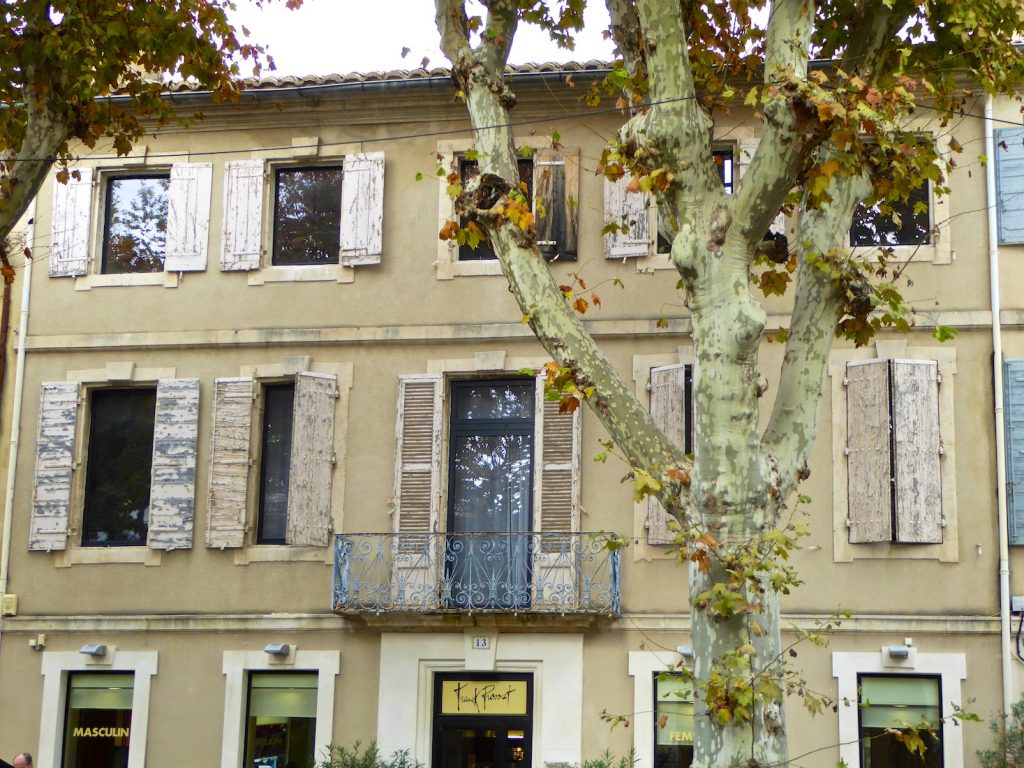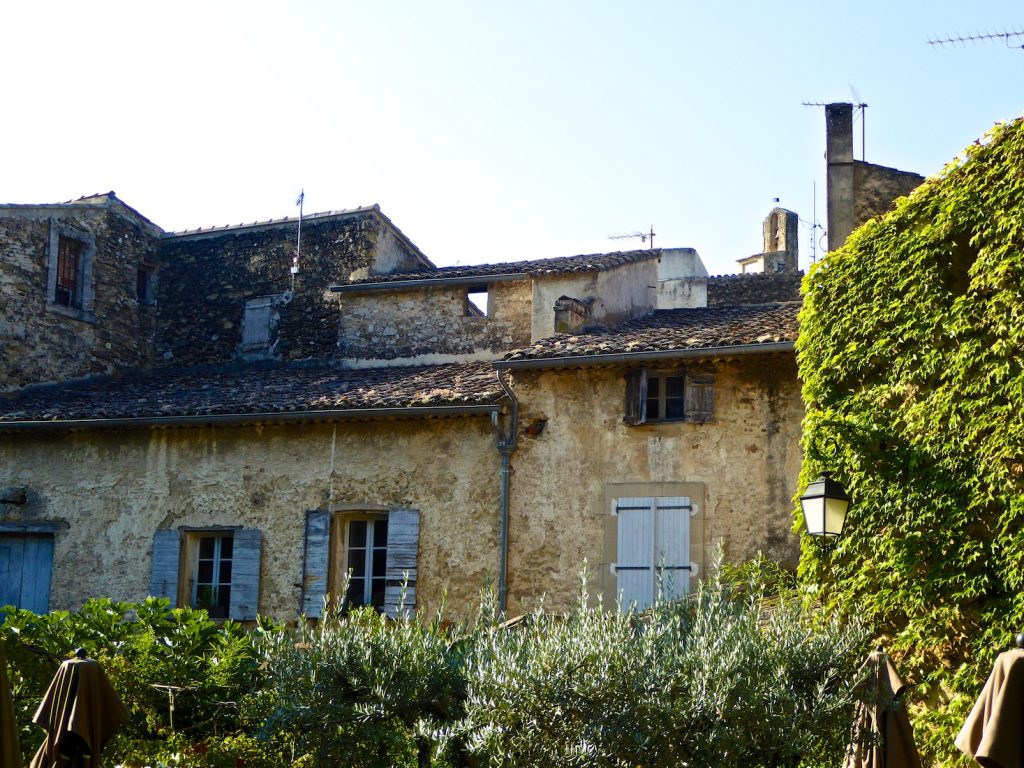I’m often asked why I called my blog ‘Shutters and Sunflowers’. To me they are both so defining of Provence and indeed much of France. Throughout this beautiful country many of the buildings whether historic or recently built are adorned with shutters.

And in the summertime, everywhere but especially in Provence the fields are painted yellow, resplendent with golden carpets of smiling sunflowers. Somehow it wouldn’t be Provence with out its dazzling, dancing tournesols and the shutters which adorn almost every window. But where did these shutters come from?

The history of shutters
It’s believed that the first shutters were designed by the ancient Greeks and made of marble. In times before there was glass, these marble shutters had fixed louvres and just as today were used for ventilation and light control. Over the years the concept was gradually developed. Marble was replaced with wood and the louvres became movable allowing the amount of light and air to be controlled.

In the Middle Ages, when windows were much smaller the shutters were hung inside. These interior shutters were pierced with holes and covered with translucent oiled parchment which allowed some light in and kept some of the draughts out. After the invention of glass in the 13th century windows became larger and building techniques more sophisticated. Interior shutters were designed to slide into apertures into the wood work beside the windows.
Exterior shutters first appeared around 1750. Normally painted white they were called contravents or persiennes. They led to the decline of the balcony the existence of which would make the opening of shutters too difficult and shutters are not just for windows!

Stories about shutters
Some claim shutters that shutters were first used in France at the court of King Louis IV. Supposedly he introduced louvered shutters into his garden walls at his magnificent Palace of Versailles. The shutters were installed so only he could open them allowing him to watch unseen the beautiful ladies from court bathe in the gardens’ numerous ponds.

Similarly in England, the story goes that when Lady Godiva road naked through the streets of Coventry, Tom would watch her unseen through his louvered shutters. Hence the term ‘Peeping Tom’!
Today only a few houses in England have shutters. In France however they are a distinguishing feature of French houses, an integral part of their charm.

Why French houses have shutters
As attractive as we might think shutters are, they have little to do with adornment but more with practicality. Restricting the amount of heat and light, shutters help keep rooms cool and prevent furniture from fading. During hot summer nights shutters make it possible for the inward opening windows to stay open keeping houses secure and minimizing unwanted insect visitors.

When outside temperatures soar it really does make a difference if you keep the shutters closed. Although it’s hard during the day to be in the dark behind closed shutters, I’m constantly amazed that when outside temperatures are sizzling if the shutters of our little house are kept fastened how cool the inside remains. Similarly on a hostile winters days especially when the Mistral is renting its wrath, closing the shutters helps keep the biting chill at bay.
Some insurers in France require you to close your shutters if you’re going to be out for longer than two hours, failure to do so can invalidate your insurance, I’ll have to check our policy!

The design of the shutters of Provence
There are a myriad of different shutter styles. Like many shutters on village houses and farm properties ours are quite plain.

Some shutters are louvered and some are hinged so that only the lower half opens, our downstairs shutter is like this.

Shutters on listed building can prove to be a real headache for property owners. Les Bâtiments de France who protect historic properties can dictate not only the style but also the colour.

It is often a requirement to seek the permission of the local Maire if you want to change your shutters especially if your property is in a plus beaux village.

In Lourmarin despite its plus beaux village status it doesn’t currently seem to be a problem…

Whether the shutters have been adorning a window for centuries

such as these

or just a few years, Lourmarin boasts a varied array of shutters colours and styles.

The shutters of Provence truly are abundant in our enchanting little village. Next time I’ll tell you a little about the sunflowers.
Download The Lourmarin Travel Guide to learn about what to see and do in Lourmarin and where you can see for yourself the shutters of Provence!




So beautiful, love the story about the shutters…
Very interesting story about the shutters and their history. I really enjoyed it.
You live in a very beautiful area. We were there several years ago and stayed in a very nice hotel right in the main part of town , where we could walk everywhere. We especially loved the Market day!
This year we are exploring a different part of France. We will enjoy a month in Oct. we are starting in Colmar and will explore the Alsace region before heading to the Loire wine route. We have many things planned but will leave enough time to find out what we like and how long we want to stay in a place once we get there.
Thank you for the very interesting article and the beautiful photos!
Thank you for sharing the information and history of the shutters in France…so interesting! Love the pictures too! =)